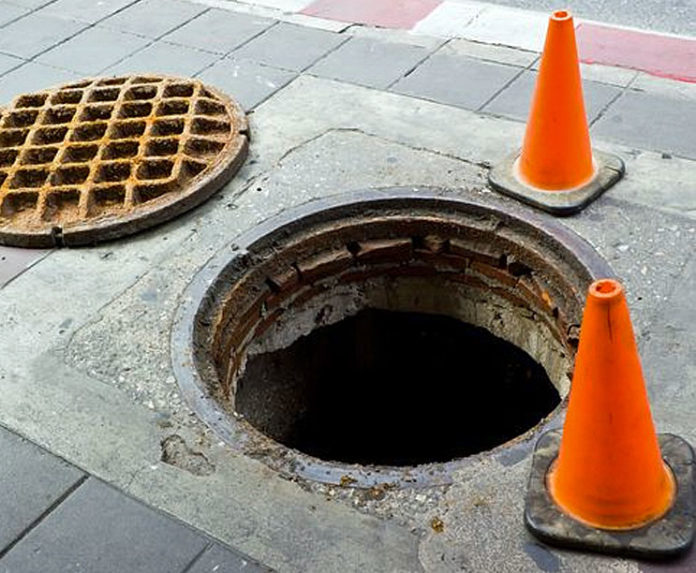
The United Nations Security Council urged joint measures to protect ‘critical infrastructure’ from terrorist attacks in February of this year.
Given the importance of critical infrastructure for a country’s security and prosperity against the backdrop of increasingly diverse physical and cyber threats from terrorist groups, the United Nations Security Council underlined the need for international collaboration – both domestically and across borders – to ensure their protection.
In a resolution adopted unanimously the 15-member Security Council reiterated “the need to strengthen efforts to improve security and protection of particularly vulnerable targets, such as infrastructure and public places.”
Attacks against objects and sectors such as banking and finance, telecommunications, emergency services, air, maritime and rail transportation, and energy and water supply – perceived as ‘attractive targets’ for terrorist groups – can result not only in civilian casualties, but also damage property on a large scale, disrupt proper functioning of public services, and create chaos in societies.
The Vulnerability, an Example – The Metcalf Attack

On 16 April 2013, just before 1AM, intruders lifted the heavy cover of a telecom underground utility vault near the Metcalf power substation just south of San Jose, CA.
They cut fiber optic telecom cables in the vault, disrupting communications in the area; a few minutes later, they entered a second vault nearby and severed more telecom cables.
Then, starting around 1:30, they focused rifle fire on high voltage transformers inside the substation fence. The shooting lasted nearly twenty minutes, and then the saboteurs vanished into the night.
Law enforcement officers arrived only a moment later, saw nothing suspicious, could not get past the locked fence, and left.
The attack caused leakage of 52,000 gallons of cooling oil and disabled 17 transformers; a blackout in portions of Silicon Valley was narrowly averted through power re-routing and conservation.
Jon Wellinghoff, then chairman of the Federal Energy Regulatory Commission, visited the site afterward and brought along military experts.
They concluded that it was a planned professional job, and Mr. Wellinghoff stated the attack was “the most significant incident of domestic terrorism involving the grid that has ever occurred” in the US.
(The United States’ Critical Infrastructure (Gas, Water and Power) is more vulnerable to security threats than most realize. In 2013, PG&E’s Metcalf substation was systematically attacked by terrorists. This attack included unauthorized entry into manholes, cutting telecommunications fiber and shooting through chainlink fences to blow up transformers. In all, damages were over $15 million and the suspects were never apprehended. Courtesy of The Wall Street Journal, CNN, Fox News and YouTube)
The Department of Homeland Security defines terrorism as any activity involving an act that is “dangerous to human life or potentially disruptive of critical infrastructure or key resources.”
By this definition, the Metcalf attack was a double act of terrorism.
It called upon UN Member States “to share information […] to prevent, protect, mitigate, investigate, respond to and recover from damage from terrorist attacks on critical infrastructure facilities, including through joint training, and use or establishment of relevant communication or emergency warning networks.”
In response to this call to action the International Association of Critical Infrastructure Protection Professionals (IACIPP) announced today, the launch of the www.IACIPP.net a global extranet designed for critical infrastructure professionals to share information with other members, keep up-to-date with the latest threats, best practice, training opportunities and much more.

Chairman of the IACIPP John Donlon QPM, FSI said “We fully endorse the UN resolution and we have already been working hard to do our part to make that aspiration a reality.
The extranet is now live and operational for members.
The association is open to all CIP professionals including operator site managers, security officers as well as first responders, government agency officials, officers and policy makers. Membership of the association is still free and we encourage colleagues around the world to join us.”
“We look forward to welcoming new members and will be demonstrating the www.IACIPP.net platform for the first time at the Critical Infrastructure Protection and Resilience, Europe conference and expo in The Hague from the 9th to 11th May 2017, where CIP professionals from across Europe and beyond will gather once again to discuss the burning issues.”
The International Association of Critical Infrastructure Protection Professionals (IACIPP), is an international association of practitioners and professionals involved in the security and safety of critical infrastructure, both physical and information infrastructure.
Membership is FREE and open to critical infrastructure operators, including site managers, security officers, government agencies, government agency officials and policy makers only.
The purpose of the association is to share ideas, information, experiences, technology and best practice.
Learn More…
















